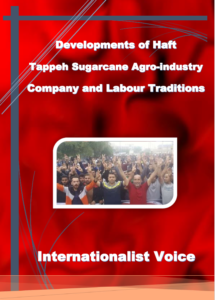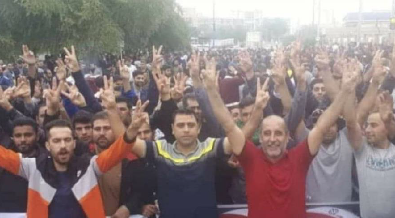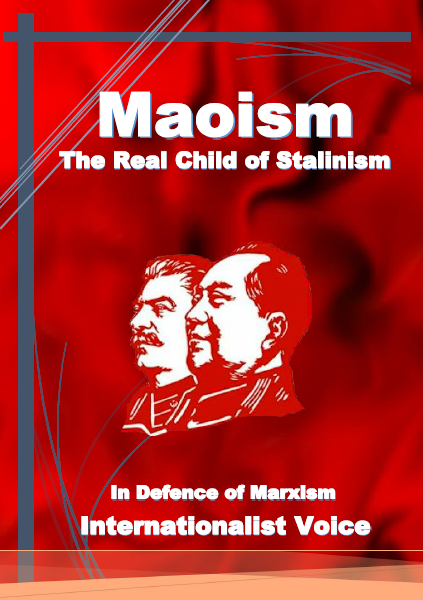The Developments of the Haft Tappeh Sugarcane Agro-Industry Company and Labour Traditions
Following the death of the executioner Raisi, the Islamic bourgeoisie launched a propaganda campaign asserting that Raisi and his government were a justice-seeking and pro-worker administration. They claimed that under the president’s government, factories and industries that were bankrupt or closed down began operating again due to the president’s efforts. This included crisis-stricken industries such as the Haft Tappeh Sugarcane Agro-Industry Company, Heavy Equipment Production Company (HEPCO), and those on the Mughan plain, among others. They also stated that workers were saved from mass unemployment and announced that the number of stagnant and semi-active businesses revived by the president’s government reached approximately 8,770[1].
It is an undeniable fact that, following the suppression of the glorious labour struggles of 2018, a very weak trend emerged among the Haft Tappeh workers who were delusional about solving labour problems through the ruling class[2]. This illusion was propagated by the so-called fundamentalist faction under the title of “justice seekers.” This was in line with the goals of this faction and the security forces among the workers and caused the most significant blow to the class unity of the workers.
The propaganda campaign of the “justice seekers” dates back a few years. During the presidential election circus of 2021 in particular, the fundamentalist faction tried to blame all the problems on the rival faction (reformists). In this regard, groups such as the Justice-Seeking Students (pro-fundamentalist students) entered the stage during Raisi’s campaign to attract some of the workers to Raisi’s side. Specifically, the labour struggles of Haft Tappeh were to be turned into a tool in the competition between the bourgeois factions. Although they did not fully succeed, they were not completely ineffective either. They were able to introduce anti-labour and religious slogans and goals into the labour protests instead of labour demands, aims, and mottoes, thereby fuelling the illusion of the fundamentalist faction. The same tactic was used, albeit less effectively, in relation to other industries, such as HEPCO.
In continuation of the “justice” campaign of the president’s government and during the funeral circus of the president in Tehran, the bourgeois propaganda machine emphasized the mourning of the workers and labour activists, showing that a group of workers from Haft Tappeh, HEPCO, etc., had participated in the funeral ceremony. During this propaganda show, Mohammad Khanifar and Muslim Cheshme Khavar were introduced as labour activists and were portrayed as symbols of workers’ mourning. It is a fact that during the labour protests of 2018, they were on the protest line and were considered to be among the labour delegates. However, now they mourned a criminal they had joined years ago and have become tools in the hands of the ruling class.
Throughout the history of the labour movement, there have always been arrogant and contemptuous individuals who, despite being workers themselves, worked against the interests of the workers and in line with the interests of the employer and the bourgeois government. During the labour struggles of the Haft Tappeh workers in 2018, Reza Rakhshan and Fereydon Nikofred played this role. For several years, Mohammad Khanifar and Muslim Cheshme Khavar have appeared in this position.
Khanifar forgets with contempt and humiliation the glorious struggles and class power of the workers, especially in 2018, when their unity and struggles shook the ground under the feet of the bourgeoisie. According to the flattery of the head of the judiciary, who issued legal proceedings against dozens of workers, including the lawyer of the Haft Tappeh ones, and filed cases against others in the security apparatus, Raisi is considered a bastion and supporter of the Haft Tappeh workers:
“Haft Tappeh was in the last days of its life, and its workers were on the verge of unemployment. The president came forward with the slogan of supporting production and listened for hours to the pain of the workers. He resolved the case that he had taken up from the judiciary during his presidency. The president supported the Haft Tappeh workers.”[3]
With a lump in his throat, he claimed that all the workers were crying and mourning, and with complete impudence, he falsely declared that the Haft Tappeh workers considered Raisi their saviour:
“The sadness of losing this popular president is very heavy for the workers because he was one of the people. Ayatollah Raisi listened to the heartache of the Haft Tappeh workers many times and made solving their problems and concerns his priority, so much so that the Haft Tappeh workers considered him the saviour of the company… All the workers have lumps in their throats and are crying, and in every corner of the company, workers are hugging their knees in grief.”[4]
Such disgusting lies and flattery, and the fact that workers are so humiliated that they flatter their oppressors and exploiters, have nothing to do with the Haft Tappeh workers. A large number of the latter see them as “the shame of Haft Tappeh,” as well as “anti-worker snitches,” “security servants,” “liars and corrupt,” and so on.
The issue is not simply about supporting or being in favour of the ruling class in the form of two individuals who once represented the workers, i.e., only at a certain stage. It is about the grounds for the formation of such problems and how to deal with them in labour traditions. In the history of the labour movement, there have always been workers who, by betraying their class interests, served the security forces as tools in the hands of the ruling class. However, the labour movement also had the necessary means in its struggle to fight against such conditions.
One of the most important traditions in the labour movement is the council one, which is formed in opposition to parliamentary thinking. In the latter, at best, a representative is elected for a number of years, and the constituents give them a signed blank cheque to make whatever decisions they want without being accountable to their constituents. In contrast, in the council tradition, the delegates are elected not for several years but only to carry out a specific task. They can express their opinions only after consulting with their constituents, and at any moment, for any reason, the constituents can replace the delegates with others. In fact, they are labour delegates for a certain stage and are not considered labour representatives for life. It is mentioned in the description of one historical case that the delegates issued a vote after consulting with their constituents.
“The revolutionäre Obleute of Berlin sent a delegation to the congress to negotiate their possible adherence to the new party. A peculiarity of these negotiations was that the majority of the seven delegates considered themselves as the representatives of the factories where they worked, casting their votes on specific issues on the basis of some kind of proportional system, only after consultation with “their” workforce, who seem to have assembled for the occasion.”[5]
During the first national congress of workers’ and soldiers’ councils in Germany, while 250,000 radical workers were demonstrating outside the congress, only 20 of the 489 delegates belonged to the Spartacists and internationalist communists, and even Rosa Luxemburg and Karl Liebknecht were not allowed to appear at this meeting to address the audience.
“The first national congress of the Workers’ and Soldiers’ Councils had come together in Berlin on 16th December. While 250,000 radical workers demonstrated outside to put pressure on the 489 delegates (of whom only 10 represented Spartakus, 10 the IKD), Rosa Luxemburg and Karl Liebknecht were not allowed to address the meeting (under the pretext that they had no mandate).”[6]
It was only by using the replacement mechanism in the council system that the revolutionary delegates were able to replace the anti-revolutionary ones, allowing the communist workers to have representation in the workers’ and soldiers’ councils.
Haft Tappeh workers have a history of glorious struggles in their collective and historical memory. The labour protests of the autumn of 2018, particularly the Haft Tappeh ones, brought families to the streets, rallied the people of the neighbourhoods, and drew women from the sidelines to the forefront of the labour protests. Women not only played an active role in these demonstrations but were also promoted to the level of organizers and speakers of labour protests and strikes.
When the workers took their labour protests into the city to gain the support of the people and neighbourhoods, their children (future workers) walked with firm steps at the front of the demonstration. These children declared their class solidarity with their parents, holding placards that read, “We are the children of the workers; we will stay with them.”
The street, the neighbourhood, and the factory had become places of discussion and even controversy. Radical workers will be in a better position when the workplace and the street become general assemblies of workers, where they all have the chance and opportunity to express their opinions regarding the continuation of labour protests. In such a situation, the anti-worker nature of people like Khanifar will be exposed to the public, and they will not be able to create confusion. Their detestable actions will be hated by the workers, who will then choose radical ones as their spokespersons or delegates.
Especially in a situation where the class struggle has not yet taken an offensive form, it is necessary to emphasize the independent struggle of the proletariat from the class ground of the proletariat and general workers’ assemblies. These factors, particularly the reference to labour traditions, lead the protestors to continue their protest with collective consciousness. This not only causes the demonstrations to become more radical every day but also leads to the growth of class consciousness among the workers, ultimately intensifying the class struggle. This is the spectre of the class struggle that the bourgeoisie fears most, as it will lead to the revolutionary destruction of the capitalist system in its development process.
Akbary-Javadi
17 July 2023
Notes:
[2] For more information, we recommend reading the booklet Lessons from Strike, Labour Struggles and Internationalist Tasks.
[5] Formation of the party, absence of the International.
[6] As source 5.
Download As PDF















